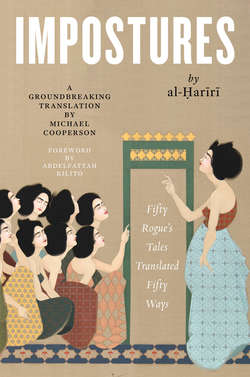Читать книгу Impostures - al-Ḥarīrī - Страница 32
Notes
ОглавлениеSinglish, a local term derived from “Singaporean English,” combines Standard English, Hokkien and other Chinese topolects, Malay, and a bit of Tamil. It is used primarily as a means of informal communication, as opposed to Standard English, which is used in formal settings and in writing. For linguistic discussions and further bibliography see Leimgruber, “Singapore English,” and Deterding, Singapore English (though the latter focuses on speech very close to Standard). Singlish has become a point of pride for many users, a dozen or so of whom have flooded YouTube with videos purporting to teach Singlish to foreigners (see, e.g., “How to Speak Singlish,” “Learning Singlish,” “Singlish Lesson 1,” “Singlish Lesson 2,” and the forty installments by the endearing Dr. Jiajia and BigBro, of which “Singlish—21” offers a brilliant response to the government’s “Speak Good English” initiative). Singlish has also been adopted as a literary language (see, e.g., Lim, “New Englishes”). But, as Jeremy Fernando pointed out to me, most of the examples are skewed toward Standard and—linguistically at least—come across as rather flat. (For a discussion of what is lost when Singlish is “corrected,” see Lim, “Review of Ming Cher.”) My translation, by contrast, is deliberately skewed away from Standard. It draws heavily on the citations in the Dictionary of Singlish and the Coxford Singlish Dictionary, and on the points of grammar and usage agreed upon by the posters of “learn Singlish” videos. The phonology is based on Leimgruber, “Singapore English,” 4–5, and the “Singlish—1” to “Singlish—40” series by Dr. Jiajia and BigBro.
“Higher Arabic” (§3.1) is my invention based on “Higher Chinese,” that is, advanced study of Chinese, an educational option for students in Singapore. “Bubble tea” is a beverage consisting of sweetened tea, milk, and tapioca balls (the “bubbles”). On repetition for emphasis see “Singlish Lesson 2—‘Repeated Words.’” “Kai La” (§3.2) is my Sinicization of Qaylah, a matriarch claimed by Ghassan, a noble Arab tribe (Sharīshī, Sharḥ, 1:140).
“Uncle” (§3.3) is “a polite term of address for a middle-aged or elderly man who may or may not be a relative” (Dictionary of Singlish). “Meh” is a question marker conveying slight incredulity (Coxford Singlish Dictionary). The poem in this section is an empat perkataan, a form used in Malay and other Austronesian languages. Every line must consist of four words, each of two syllables, arranged not in sentence form but by association of meaning or sound; rhymes may be consecutive or alternating (see “Empat Perkataan,” and Lim, “New Englishes”).
The poem in §3.4 is a liwuli, an originally Chinese form consisting of (1) a set of instructions in thirty-one syllables; (2) fourteen syllables arranged in three lines, of unspecified content; and (3) ten syllables arranged in two lines, phrased as a question (see Hopkins, “Getting Liwulis,” and Jain, “Liwuli on Life”). The Fatihah is the first chapter of the Qurʾan, called in al-Ḥarīrī’s original “the seven oft-repeated verses.”
“Bǔ Zàidé” (卜在德) in §3.5 is a Sinicization of Abū Zayd, suggested by David Schaberg. Bǔ is a relatively rare surname meaning “to divine using cracks in bone or shell,” but is now nearly homophonic with bù, meaning “not.” Zàidé means “is dependent on virtue,” so the combination sounds like “not dependent on virtue.” The poem in this section is a pantun, a Malay form consisting of a rhymed quatrain in which each line contains between eight and twelve syllables (“Pantun”).
